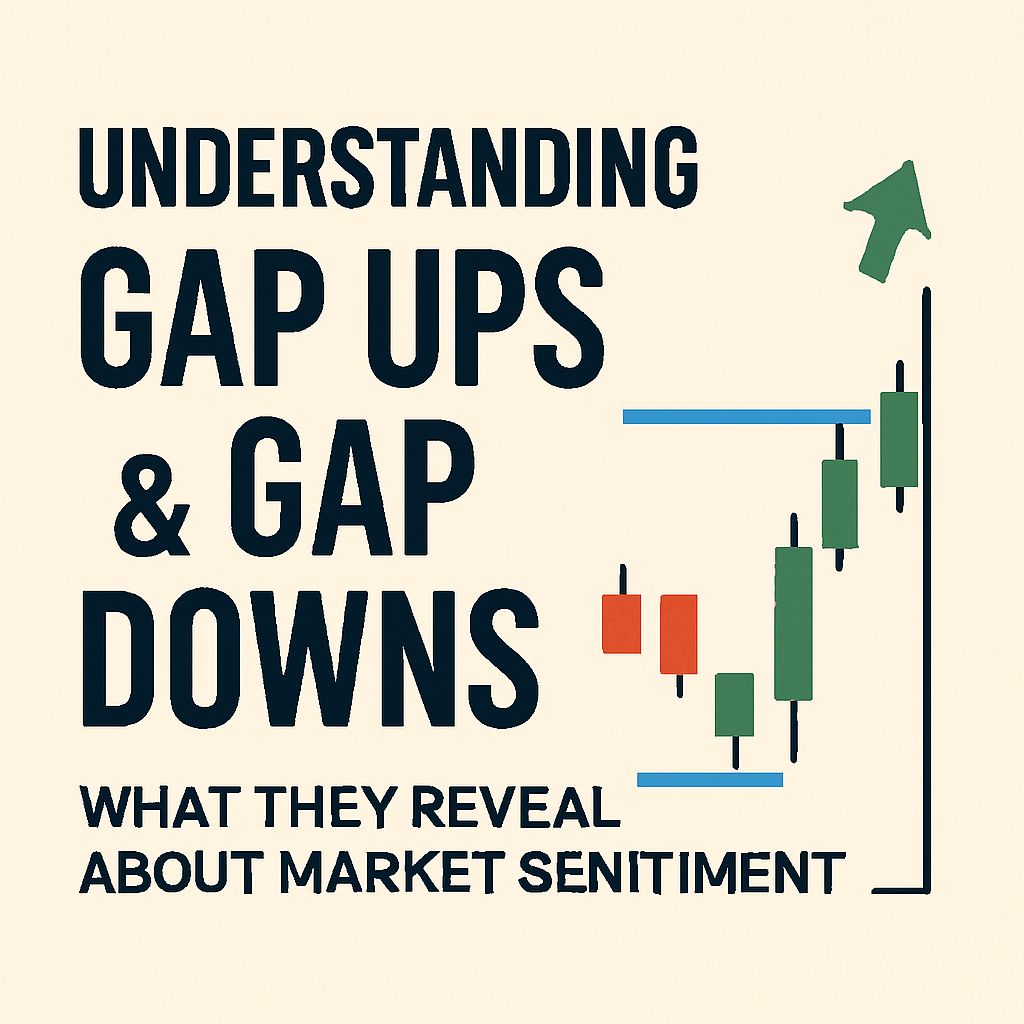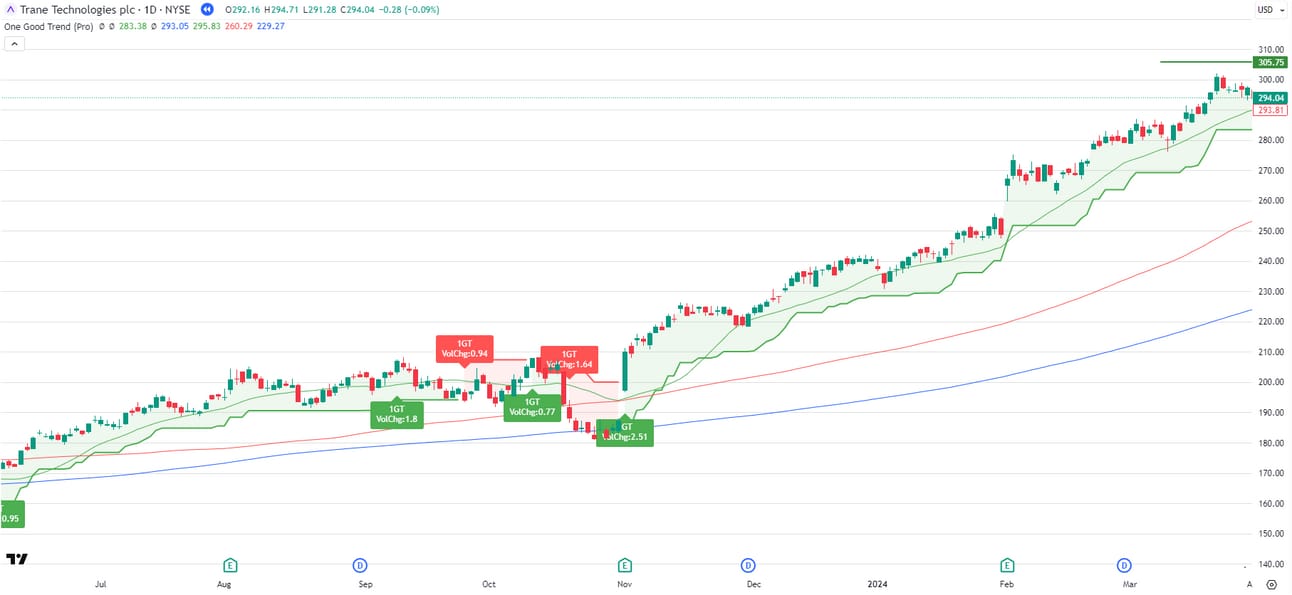- Joey Choy Top Stocks
- Posts
- Understanding Gap Ups & Gap Downs: What They Reveal About Market Sentiment
Understanding Gap Ups & Gap Downs: What They Reveal About Market Sentiment
Learn How Price Gaps Signal Strength, Weakness, and Potential Market Moves

What is a Price Gap?
A price gap occurs when a stock opens significantly higher or lower than its previous closing price, leaving a visible space on the chart where no trading occurred. This happens due to strong market forces that push the stock price up or down outside of normal trading hours, often triggered by news events, earnings reports, or macroeconomic developments.
Traders and investors pay close attention to these gaps because they can signal a shift in momentum — whether bullish or bearish. Understanding the different types of gaps can help investors interpret market sentiment and make more informed decisions.
Why Do Gaps Happen?
Gaps are primarily driven by supply and demand imbalances. When overwhelming buying or selling pressure builds up overnight, the market adjusts instantly upon opening, leading to a price gap.
Some common reasons for gaps include:
🔹 Earnings Announcements – If a company reports much better or worse-than-expected earnings, the stock may gap up or down accordingly.
🔹 Major News Events – Regulatory changes, product launches, mergers, or economic data releases can spark significant movement.
🔹 Market-Wide Trends – Broader market sentiment, such as Federal Reserve rate decisions or geopolitical events, can trigger large-scale gaps across multiple stocks.
Types of Price Gaps and What They Mean
Not all gaps indicate the same thing. Some signal trend continuation, while others suggest potential reversals. Let’s break down the four main types:
1️⃣ Breakaway Gaps (Signaling a Strong Trend)
A breakaway gap occurs when a stock gaps above resistance or below support with strong volume, signaling a major shift in market direction. These gaps often happen after significant news or earnings reports and can mark the beginning of a new trend.
💡 Example: A stock trading sideways for months, capped below a strong resistance level, suddenly gaps up after announcing record-breaking revenue growth, pushing it into a new uptrend.
2️⃣ Runaway (Continuation) Gaps (Trend Strengthening)
A runaway gap appears within an already established trend, reinforcing its strength. These gaps typically occur in the middle of a strong uptrend or downtrend, as traders pile in, creating additional momentum.
💡 Example: A stock already in an uptrend gaps higher due to increased demand, confirming that the bullish move still has room to continue.
3️⃣ Exhaustion Gaps (Potential Trend Reversal)
An exhaustion gap happens near the end of a strong trend and suggests that momentum may be fading. It’s often caused by a final surge of buying (in an uptrend) or selling (in a downtrend) before a stock reverses direction.
💡 Example: A stock that has been rallying for months gaps up significantly but then starts to decline soon after, indicating that the uptrend is losing steam.
4️⃣ Common Gaps (No Major Impact on Trend)
Unlike the other gaps, common gaps occur due to normal market fluctuations and don’t indicate any strong buying or selling pressure. These gaps are usually small and often get filled quickly.
💡 Example: A stock gaps down slightly due to routine pre-market fluctuations but recovers within the same trading session.
How to Identify and Analyze Gaps
When analyzing gaps, it’s important to look at volume and trend confirmation to determine their significance. A strong breakaway or continuation gap should be accompanied by high volume, while an exhaustion gap may show signs of slowing momentum.
In our 1GT (Pro) indicator, the Volume Change (VolChg) function is useful for identifying whether a gap is backed by strong institutional buying or selling. A volume change of 1.5 or higher is a good indication that the move has strength.

1GT Bullish Signal with 2.51 VolChg, Trane Technologies (TradingView)
Additionally, traders can use support & resistance levels to see whether a gap holds or reverses. If a stock gaps up but struggles to stay above a key resistance level, it may not sustain the move.
Final Thoughts
Understanding gap ups and gap downs is essential for interpreting market sentiment. Whether a gap signals the start of a new trend, the continuation of an existing one, or a potential reversal, recognizing the different types can help investors stay ahead of price movements.
Hope you have found the above useful 😃
If you have yet to be a part of Joey’s VIP clients in Phillip Securities receiving his Exclusive WhatsApp Broadcast daily, you can check it out here!
Joey and team post Top SG Stock Ideas, Market Updates, Research Reports and training videos on a daily basis at NO additional cost.
Look forward to see you on the inside!
- Joey, Bervyn & Zee
Note that by subscribing to receive any of Joey's training by email, you agree to allow us to send you the training by email. Investments are subject to investment risks including the possible loss of the principal amount invested. The value of the units in any fund and the income from them may fall as well as rise. If the investment is denominated in a foreign currency, factors including but not limited to changes in exchange rates may have an adverse effect on the value, price or income of an investment. Past performance figures as well as any projection or forecast used in these web pages, are not necessarily indicative of future or likely performance of any investment products. By Accessing this Website and ANY of its pages, you are agreeing to the terms set out ON ALL the following pages as seen below. Copyright © | Joey Choy | All Rights Reserved | Disclaimer | Privacy & Security Policy | Terms and Conditions
